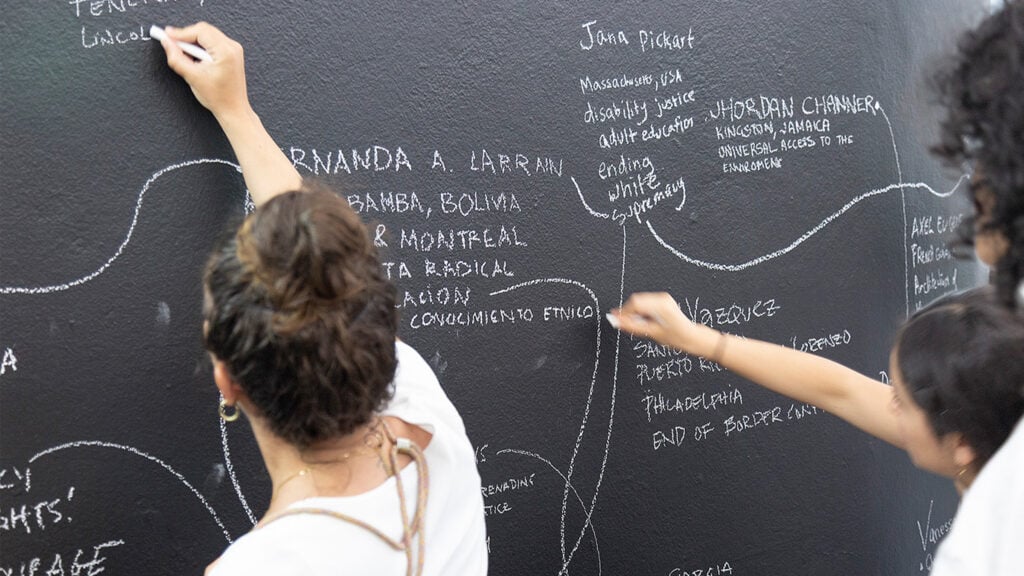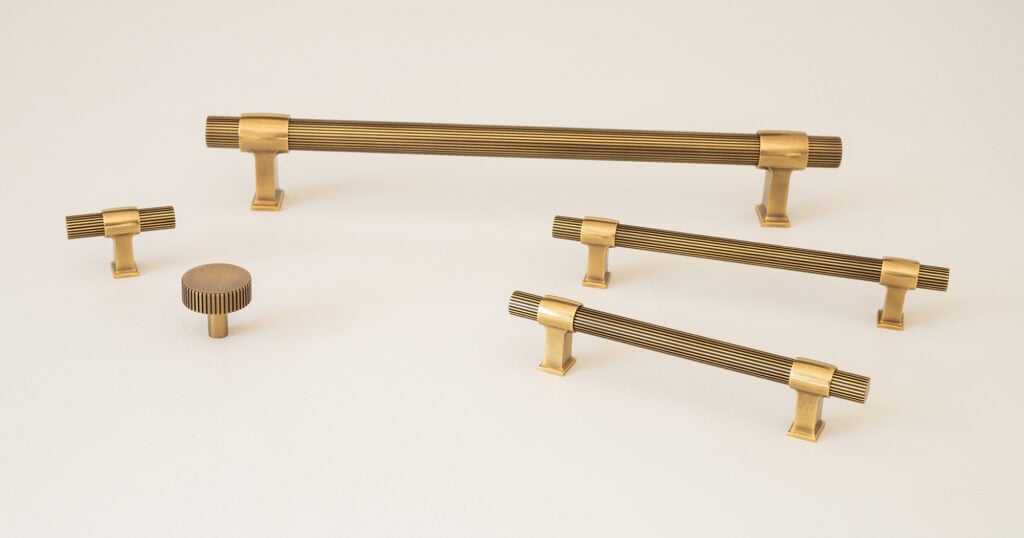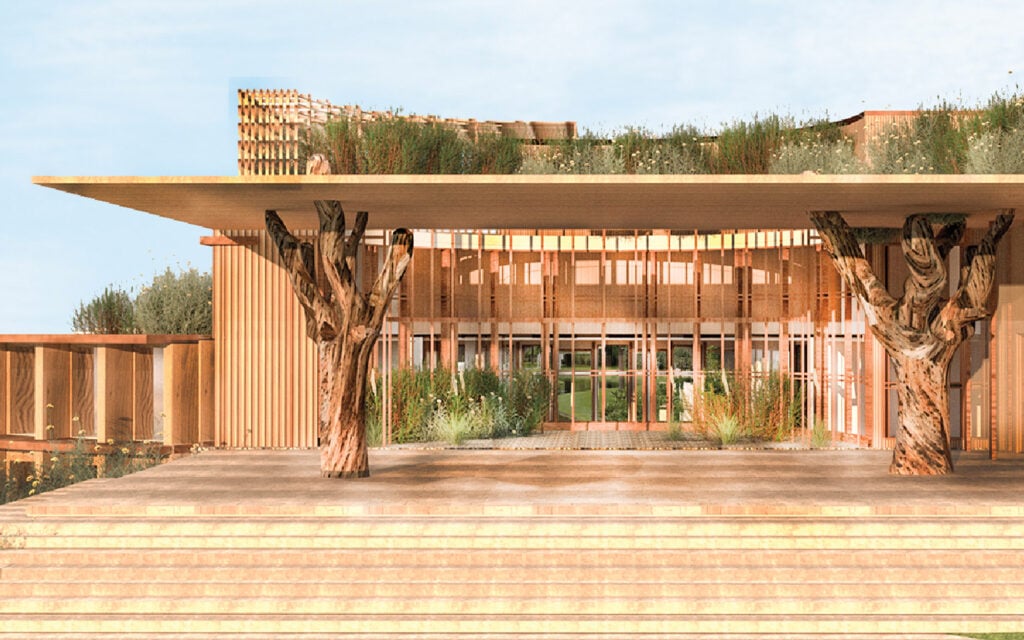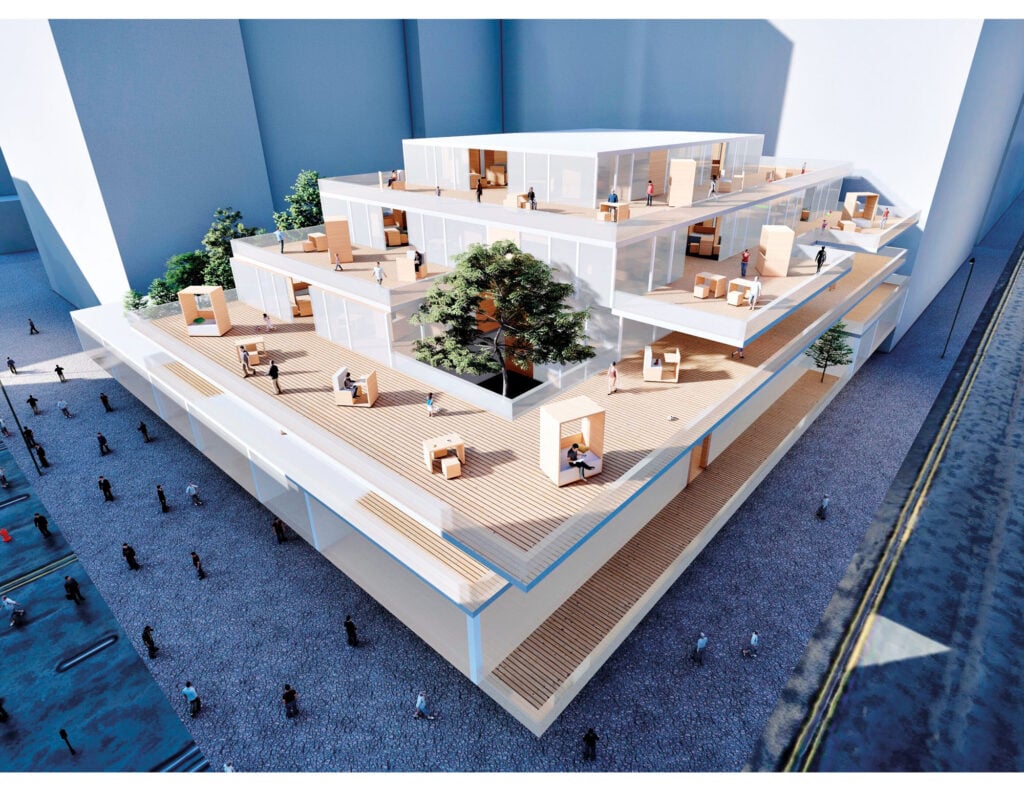
April 13, 2022
Future100: Students Explore Futuristic Building Technologies
The rapid ascent of computational technology and fabrication techniques continues apace, facilitating projects of ever-greater complexity and structural daring. But those feats of architecture and engineering remain limited by the fundamental constraints of economy and contracting know-how. That’s where architecture schools come in; they have long served as incubators for new modes of building and habitation that address the many crises of our time. So perhaps it is no surprise that the students of this year’s Metropolis Future100 are grappling with such issues as the migrant crisis, equity, pandemic response, and the remediation of mass incarceration.
For University of Pennsylvania MArch student Danny Ortega, his portfolio titled In Between Realms demonstrates proposals as works of parafiction or what he describes as a “construction of reality through the hybridization of diverse media.” The portfolio is self-admittedly a flight of imagination, but the proposals retain a comprehensive understanding of materials and how structural and facade systems come together. Take the No Nation Embassy, a proposed safe house “for people of all backgrounds, cultures, and faiths,” where Ortega deftly lays out through structural models, facade applications, and axonometric diagrams how myriad pieces, such as sculptural columns of steel, composite stone panels, and ETFE, come together.
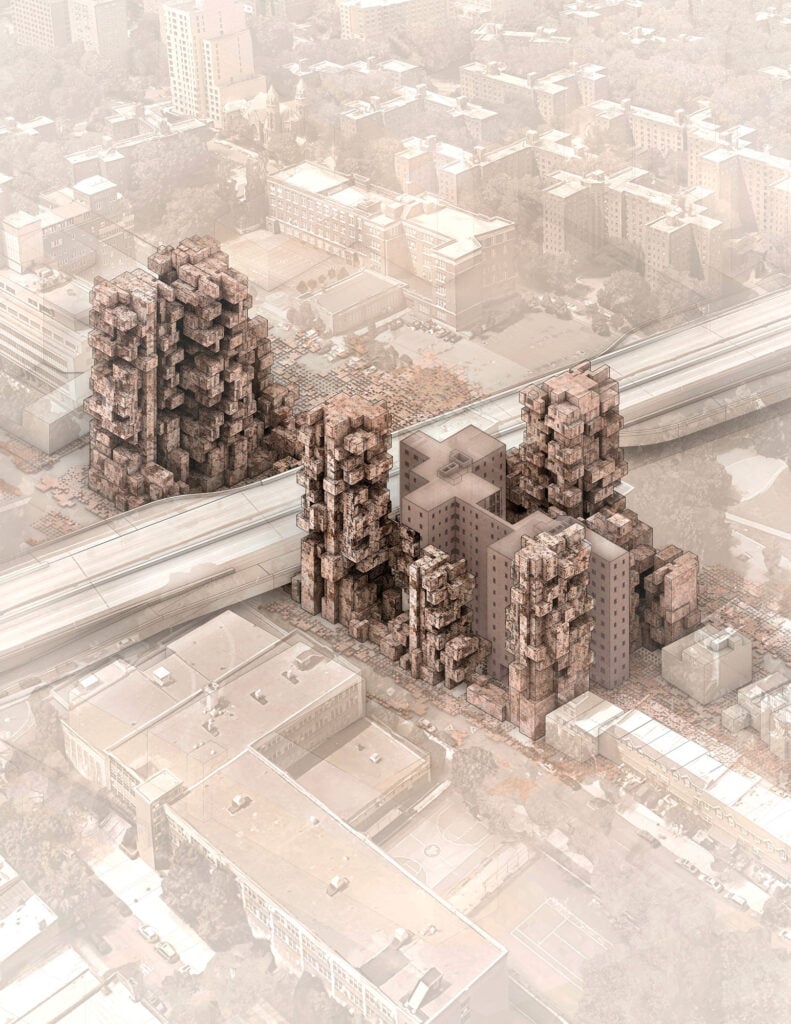
Umar Mahmood’s Fractal Units project is a large-scale urban housing development that incorporates apartments, shelter units, soup kitchens, and public programs. According to Mahmood, “The project investigates [Mandelbrot] fractal geometry, which can act as a bridge between biological accidents and technical systems.” COURTESY UMAR MAHMOOD

Danny Ortega’s No Nation Embassy proposal aims to honor the history of Seneca Village, a largely African-American community that was destroyed to create Manhattan’s Central Park in 1857. The student writes, “With the ideology of anti-empiricism, this remake of Seneca Village accepts all as citizens with equal rights,” and acts as a safe space for undocumented immigrants and refugees. COURTESY DANNY OERTEGA

That same attention to detail and systems proficiency is on display in the work of fellow UPenn student Umar Mahmood. His concept for public housing, The Fractal Units, blends apartments and shelter units with amenities and services for the unhoused. However, it is the proposal’s exploration of biochemical reactions as a form of tectonic and structural expression that sets it apart from the pack. “On an urban scale the project acts as a hybrid tower and land-form,” writes Mahmood. “It behaves both as a Megastructure due to its multiple towers and as a Megaform due to the landform around the urban corridor.”
For School of Visual Arts interior design undergraduate student Xinze Li, “challenging the current limits or standards of building technology is always laudable, especially for students.” To that end, her proposal Box World offers a refreshing take on post-carceral habitation that facilitates shared spaces through movable furniture and readily customizable rooms. The mobile pieces of furniture are largely crafted of wood and, owing to their solar-powered lights, also function to illuminate the proposal’s outdoor spaces.
The three student projects demonstrate vivid imagination and technical mastery, and portend more things to come.
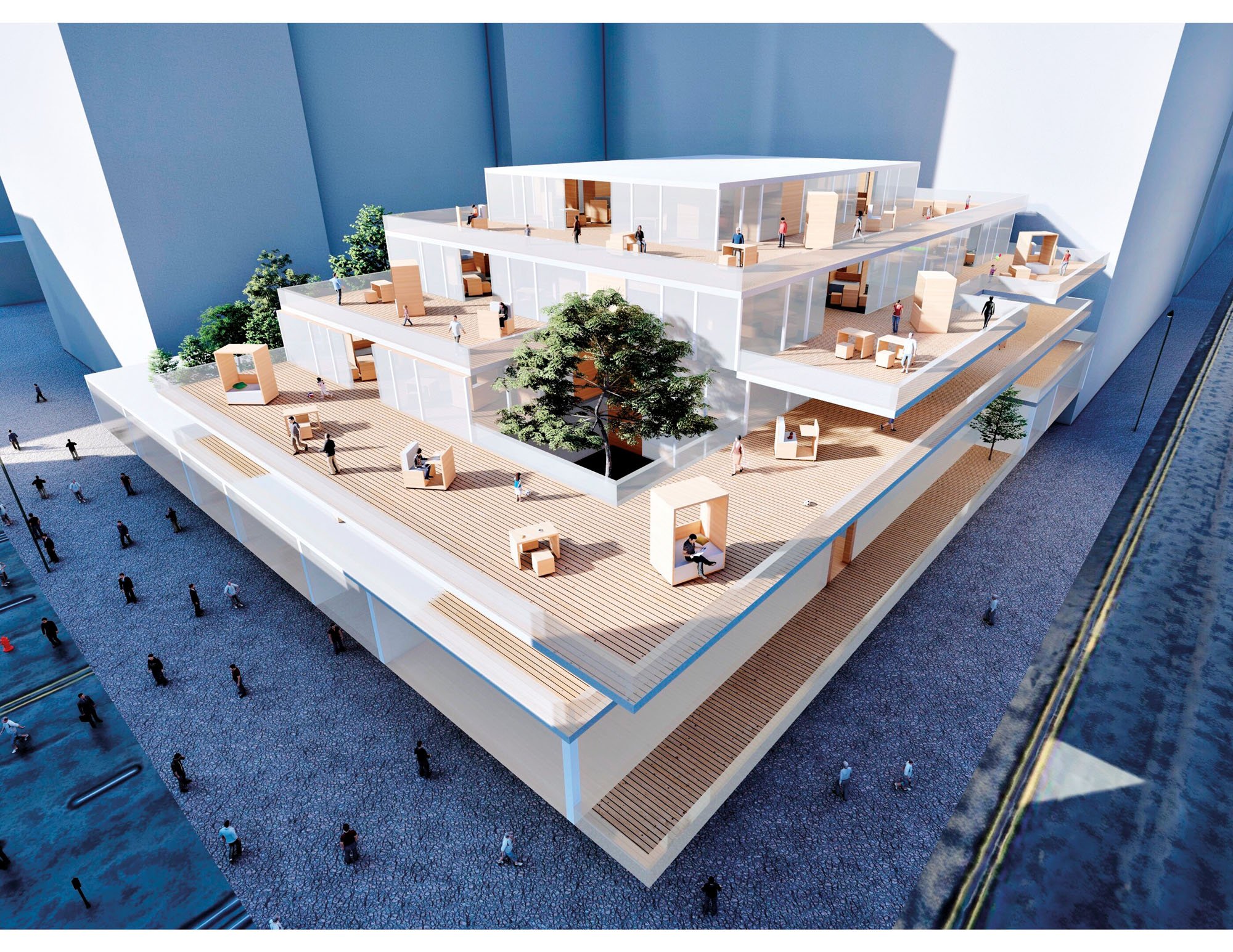
School of Visual Arts undergraduate student Xinze Li’s Box World proposal serves as a contemporary hotel for formerly incarcerated adults. Designed to evoke freedom of movement, the hotel is filled with customizable, modular furniture that can be arranged both indoors and out. COURTESY XINZE LI
Would you like to comment on this article? Send your thoughts to: [email protected]
Related
Profiles
WAI Architecture Think Tank Approaches Practice as Pedagogy
Nathalie Frankowski and Cruz García use their practice to help dismantle oppressive systems, forge resistance spaces, and reimagine collective futures.
Products
Functional Beauty: Hardware That Does More Than Look Good
Discover new standout pieces that marry form and function, offering both visual appeal and everyday practicality.
Profiles
The Next Generation Is Designing With Nature in Mind
Three METROPOLIS Future100 creators are looking to the world around them for inspiration.



